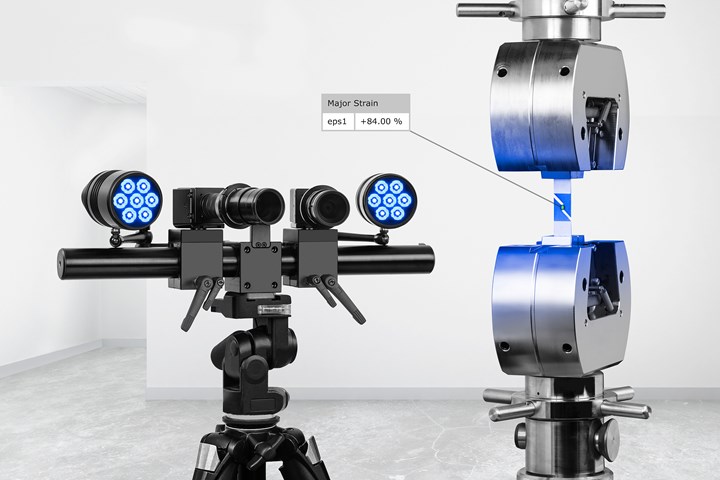Aramis optical strain gage targets material and structural testing
Trilion Quality Systems’ non-contact and material-independent measuring system is cheaper, more accurate, less labor/time-intensive and is said to provide 100 times more data.

Source | Trilion Quality Systems
Trilion Quality Systems’ (King of Prussia, Penn., U.S.) Aramis optical strain gage is a non-contact and material-independent measuring system that is said to provide critical data such as full-field optical strain, 3D displacement and vibration analysis with ease. According to the company, Aramis is a clear alternative for foil gages and extensometers while being 10 times cheaper than a traditional mechanical gage, 50 times less labor/time-intensive and providing 100 times more data.
At its core, Aramis is said to comprise 3D Digital Image Correlation (3D-DIC), a non-contact measuring technique based on advanced image processing, which is reportedly more accurate than mechanical gauges. DIC is capable of mapping 3D coordinates and evaluating displacement and strain maps on the surface of measured samples and uses a stochastic pattern and/or point markers to track the surface of the materials with sub-pixel accuracy or microns of motion.
With countless applications from FEA validation, material/structural testing/SHM and high-speed measurements, Trilion says Aramis is being used for a wide range of industries including automotive, aerospace, biomechanics, amongst others, making it the ideal first tool of choice when it comes to material and structural testing.
Related Content
-
“Structured air” TPS safeguards composite structures
Powered by an 85% air/15% pure polyimide aerogel, Blueshift’s novel material system protects structures during transient thermal events from -200°C to beyond 2400°C for rockets, battery boxes and more.
-
Plant tour: Airbus, Illescas, Spain
Airbus’ Illescas facility, featuring highly automated composites processes for the A350 lower wing cover and one-piece Section 19 fuselage barrels, works toward production ramp-ups and next-generation aircraft.
-
Development of a composite liquid hydrogen tank for commercial aircraft
Netherlands consortium advances cryogenic composites testing, tank designs and manufacturing including AFP, hybrid winding, welding of tank components and integrated SHM and H2 sensors for demonstrators in 2025.



